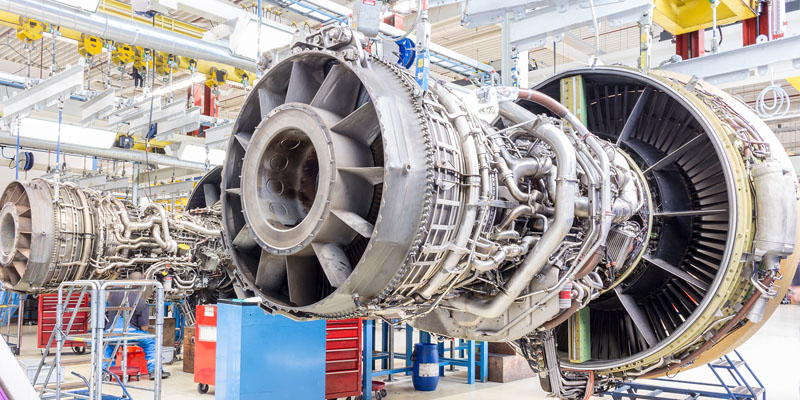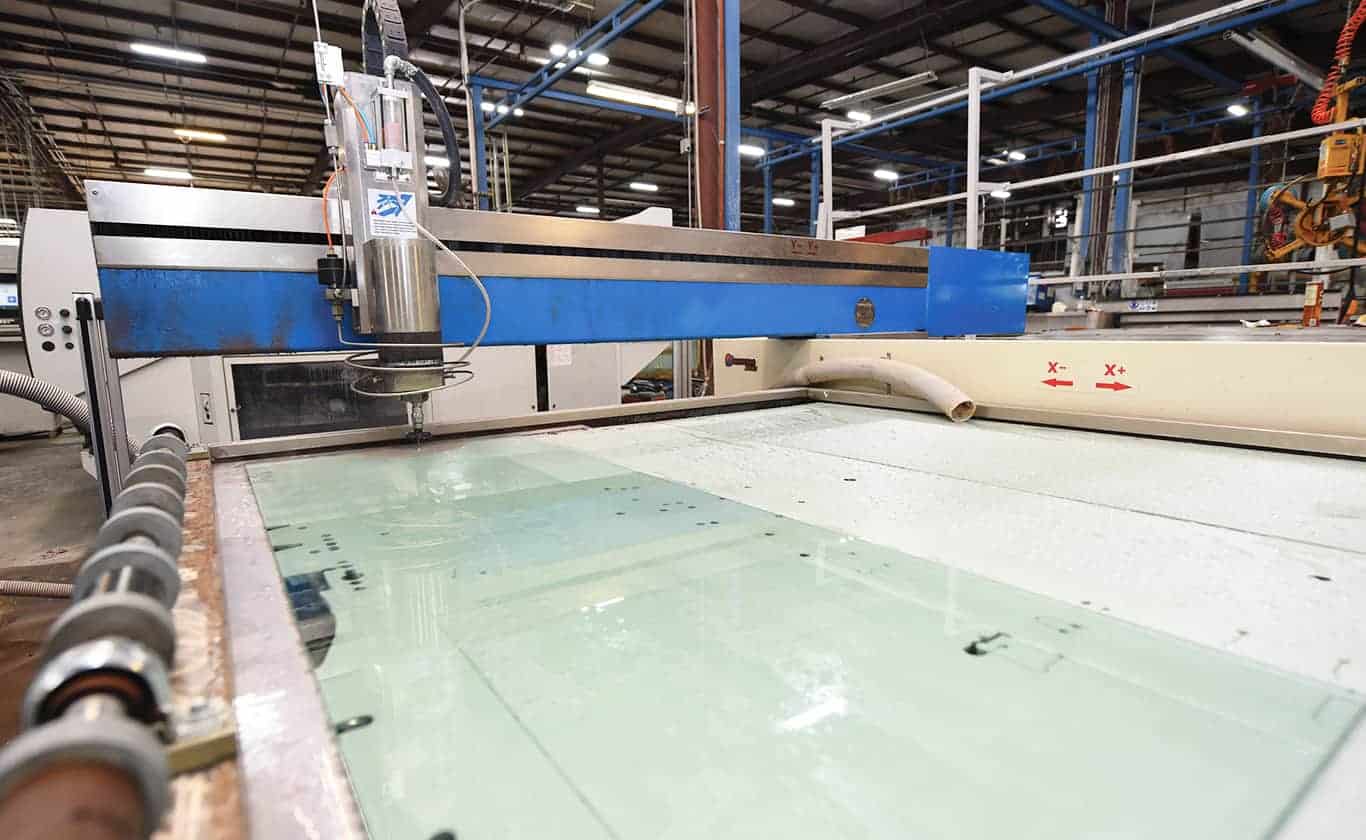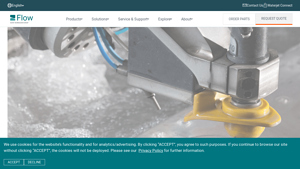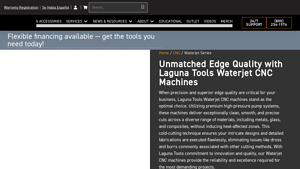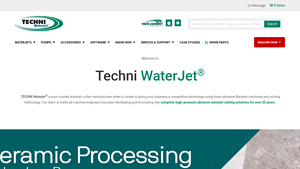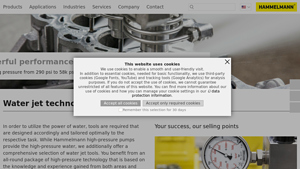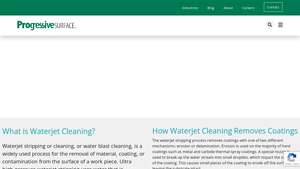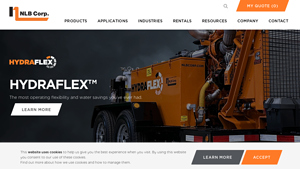Industrial Water Jet Guide: Type, Cost, Top List…
Introduction: Navigating the Global Market for industrial water jet
In today’s competitive landscape, sourcing the right industrial water jet system can be a daunting challenge for B2B buyers, particularly in emerging markets like Africa, South America, the Middle East, and Europe. With an array of options available, it’s crucial to navigate the complexities of technology, application, and supplier reliability. This guide serves as an essential resource, equipping international buyers with the insights needed to make informed purchasing decisions in the industrial water jet market.
We delve into various types of water jet systems, exploring their unique features and applications across industries such as aerospace, automotive, and construction. Buyers will find a comprehensive analysis of supplier vetting processes, ensuring they select manufacturers that align with their operational needs and quality standards. Additionally, we cover cost considerations, financing options, and the long-term value of investing in advanced cutting technology.
By empowering B2B buyers with practical knowledge and expert recommendations, this guide aims to streamline the procurement process, enhance operational efficiency, and ultimately drive business growth. Whether you are looking to upgrade your current capabilities or are new to the technology, understanding the landscape of industrial water jets will enable you to make strategic decisions that propel your business forward.
Understanding industrial water jet Types and Variations
| Type Name | Key Distinguishing Features | Primary B2B Applications | Brief Pros & Cons for Buyers |
|---|---|---|---|
| Abrasive Waterjet | Utilizes abrasive materials mixed with water for cutting | Metal fabrication, aerospace, automotive | Pros: Versatile, capable of cutting thick materials. Cons: Higher operational costs due to abrasives. |
| Pure Waterjet | Uses only high-pressure water for cutting | Food processing, textiles, soft materials | Pros: Cost-effective, no abrasives needed. Cons: Limited to softer materials. |
| 5-Axis Waterjet | Allows cutting at multiple angles for complex geometries | Aerospace, automotive, intricate designs | Pros: High precision for complex shapes. Cons: More expensive and requires skilled operators. |
| 3-Axis Waterjet | Standard configuration for straightforward cutting operations | General fabrication, signage | Pros: Lower initial investment, easy to operate. Cons: Limited capability for complex cuts. |
| High Rail Waterjet | Features a high rail system for larger cutting areas | Heavy industry, large components | Pros: Suitable for large-scale projects. Cons: Requires more space and higher maintenance. |
What Are the Characteristics of Abrasive Waterjet Systems?
Abrasive waterjet systems combine high-pressure water with abrasive materials, enabling them to cut through a wide range of hard materials, including metals and composites. These systems are particularly suitable for industries like aerospace and automotive, where precision and thickness are critical. When considering this type, buyers should evaluate the cost of abrasives and the potential need for additional maintenance due to wear on components.
How Does Pure Waterjet Cutting Differ?
Pure waterjet cutting relies solely on high-pressure water to perform cuts, making it an ideal choice for softer materials such as food products and textiles. This method is cost-effective as it eliminates the need for abrasives, reducing operational costs. However, buyers must recognize its limitations in cutting harder materials, which may necessitate a dual-system approach if diverse material processing is required.
What Are the Advantages of 5-Axis Waterjet Technology?
5-axis waterjet machines offer the ability to cut at various angles, making them perfect for intricate designs required in aerospace and automotive applications. This technology enhances precision and allows for complex geometries that other systems cannot achieve. However, the investment is higher, and operators must have specialized skills to fully utilize the machine’s capabilities, making training and support critical factors for buyers.
Why Choose 3-Axis Waterjet Machines?
3-axis waterjet systems are the most common configuration, providing efficient cutting for straightforward applications. They are user-friendly and require less initial investment, making them accessible for small to medium-sized businesses. However, their limited capabilities for complex cuts may lead buyers to consider additional equipment as their needs grow, particularly in competitive markets.
What Are the Benefits of High Rail Waterjet Systems?
High rail waterjet systems are designed for larger cutting areas, making them ideal for heavy industries dealing with oversized components. They provide the ability to handle extensive projects efficiently. However, buyers should consider the space requirements and potential for increased maintenance costs associated with these larger systems, as well as their suitability for specific applications in their operations.
Key Industrial Applications of industrial water jet
| Industry/Sector | Specific Application of industrial water jet | Value/Benefit for the Business | Key Sourcing Considerations for this Application |
|---|---|---|---|
| Aerospace | Cutting complex components from titanium and composites | Precision cuts with minimal heat-affected zones | Need for high-pressure systems capable of intricate designs; certification for aerospace standards. |
| Automotive | Manufacturing parts like gaskets and interior trims | Versatile cutting of various materials with clean edges | Consideration for machine size and material compatibility; ability to handle high volume production. |
| Construction | Stone and tile cutting for architectural designs | Ability to produce intricate patterns without chipping | Requirement for robust machines that can handle heavy materials; local service support for maintenance. |
| Food Processing | Cutting and shaping food products like cakes and meats | Ensures hygiene and precision in food preparation | Compliance with food safety regulations; easy-to-clean systems to maintain hygiene standards. |
| Metal Fabrication | Custom metal parts production for various industries | Efficiently cuts thick metals with high accuracy | Need for customizable systems that can adapt to different project requirements; strong after-sales support. |
How Is Industrial Water Jet Used in Aerospace Applications?
In the aerospace industry, industrial water jets are used to cut complex components made from materials like titanium and advanced composites. These materials require precise cutting to maintain structural integrity and performance. Water jet technology addresses challenges such as heat distortion and edge quality, which are critical in aerospace applications. Buyers in this sector must prioritize high-pressure systems that meet specific aerospace standards and ensure compliance with stringent quality controls.
What Are the Benefits of Water Jet Cutting in Automotive Manufacturing?
The automotive industry benefits significantly from water jet cutting, particularly in the manufacturing of parts like gaskets and interior trims. This technology allows for versatile cutting of various materials, including rubber, plastics, and metals, while ensuring clean edges that reduce the need for secondary processing. For international buyers, it’s essential to consider machine specifications that accommodate high-volume production and the ability to work with diverse materials, ensuring that production lines remain efficient.
How Does Water Jet Technology Enhance Construction Projects?
In construction, water jet cutting is instrumental in shaping stone and tile for architectural designs. This method allows for intricate patterns and precise cuts without chipping, making it ideal for high-end projects. Buyers must look for robust machines that can handle heavy materials and ensure local service support for maintenance and repairs, especially in regions where access to technical expertise may be limited.
Why Is Industrial Water Jet Important in Food Processing?
Industrial water jets play a crucial role in food processing, where they are employed to cut and shape various food products, including cakes and meats. This technology ensures hygiene and precision, minimizing contamination risks. Buyers in the food sector should prioritize systems that comply with food safety regulations and are easy to clean, ensuring that production lines adhere to health standards while maintaining efficiency.
How Does Metal Fabrication Benefit from Water Jet Cutting?
Metal fabrication industries utilize water jet cutting for producing custom metal parts across various applications. The technology efficiently cuts thick metals while maintaining high accuracy, which is vital for ensuring the quality of finished products. When sourcing water jet systems, businesses should consider customizable options that can adapt to different project requirements, as well as the availability of strong after-sales support to minimize downtime.
3 Common User Pain Points for ‘industrial water jet’ & Their Solutions
Scenario 1: Difficulty in Selecting the Right Waterjet Machine for Diverse Materials
The Problem: Many B2B buyers struggle with choosing the appropriate waterjet cutting system that can handle a variety of materials and thicknesses. This challenge is particularly significant for companies in industries like aerospace, automotive, and metal fabrication, where precision and adaptability are critical. The fear of investing in the wrong machine can lead to indecision and ultimately lost opportunities, as buyers weigh the costs of specialized versus versatile systems.
The Solution: To navigate this challenge, buyers should begin by conducting a thorough assessment of their specific cutting needs, including the types of materials they will work with (metals, composites, glass, etc.) and the required thickness ranges. Next, they should engage with manufacturers that offer customizable solutions, allowing for a tailored configuration that meets their exact requirements. For instance, opting for a machine with both abrasive and non-abrasive capabilities can provide flexibility for various projects. Additionally, it’s advisable to request demonstrations or trials to see the machine in action, ensuring it meets quality standards before making a purchase. Collaborating with knowledgeable suppliers who understand the intricacies of waterjet technology can also guide buyers toward the most effective investment for their unique operational needs.
Scenario 2: Managing High Operational Costs and Downtime
The Problem: Operational costs and unexpected downtime are significant pain points for businesses utilizing waterjet cutting technology. High-pressure systems can be costly to maintain, and any breakdown can halt production, affecting delivery timelines and customer satisfaction. For international buyers in regions with limited access to technical support or spare parts, this can become a critical issue that impacts their competitiveness in the market.
The Solution: To mitigate these challenges, companies should prioritize investing in high-quality waterjet systems that come with robust warranties and reliable customer support. Researching manufacturers known for their strong service networks can provide peace of mind. Additionally, implementing a proactive maintenance schedule that includes regular inspections and timely replacement of wear parts can prevent costly breakdowns. Training staff on proper operation and maintenance procedures is also essential; well-trained operators can identify issues before they lead to significant downtime. Moreover, exploring financing options that allow for budget flexibility can help businesses invest in reliable systems without straining their finances.
Scenario 3: Overcoming Quality Issues with Edge Finish
The Problem: Many users of waterjet cutting technology face challenges with edge quality, which can result in additional processing needs and affect the final product’s aesthetic and functional properties. This issue is especially pronounced in industries requiring high precision, such as architecture and automotive, where even minor imperfections can lead to costly rework or project delays.
The Solution: To address edge quality concerns, buyers should consider investing in advanced waterjet systems equipped with features designed to enhance cutting precision, such as adjustable pressure settings and advanced cutting heads that minimize taper and improve edge smoothness. Additionally, utilizing high-quality abrasives and ensuring that water quality meets specified standards can significantly impact the final cut quality. Collaborating with manufacturers that provide comprehensive training on best practices for programming and operating the machinery can also help users optimize their processes for superior results. Finally, establishing a feedback loop with quality control measures in place will enable companies to continually refine their cutting techniques, ensuring that they meet or exceed industry standards.
Strategic Material Selection Guide for industrial water jet
What Are the Key Properties of Metals for Industrial Water Jet Applications?
Metals are among the most commonly processed materials in industrial water jet applications. Key properties that influence their performance include temperature and pressure ratings, as well as corrosion resistance. For instance, stainless steel offers excellent corrosion resistance, making it suitable for environments with moisture or chemicals. However, it can be more challenging to cut due to its hardness compared to softer metals like aluminum.
What Are the Advantages and Disadvantages of Using Composites in Water Jet Cutting?
Composites, such as carbon fiber and fiberglass, are increasingly popular due to their lightweight and high-strength characteristics. They can be cut with precision using water jet technology without introducing heat-affected zones, which is crucial for maintaining structural integrity. However, composites can be more expensive and may require specialized cutting heads to avoid delamination. Additionally, their manufacturing complexity can lead to longer lead times, which may not suit all production schedules.
How Does Stone and Tile Perform in Water Jet Cutting Applications?
Stone and tile are often cut using water jet technology for applications in construction and interior design. The cold cutting process ensures that the material does not crack or chip, which is a common issue with traditional cutting methods. However, the weight and brittleness of these materials can pose challenges during handling and transport. For international buyers, it is essential to consider local regulations regarding the sourcing and use of natural stone, as well as compliance with standards such as ASTM for durability.
What Should International Buyers Consider When Selecting Glass for Water Jet Cutting?
Glass is another material that benefits significantly from water jet cutting, particularly in architectural applications. The ability to create intricate designs without the risk of thermal stress makes water jets an ideal choice. However, glass can be more expensive and requires careful handling due to its fragility. Buyers from regions like Africa and the Middle East should be aware of local standards for glass quality and safety, as well as any import regulations that may apply.
Summary Table of Material Selection for Industrial Water Jet Applications
| Material | Typical Use Case for industrial water jet | Key Advantage | Key Disadvantage/Limitation | Relative Cost (Low/Med/High) |
|---|---|---|---|---|
| Metals | Aerospace, automotive, and manufacturing | Excellent durability and strength | Can be challenging to cut, especially harder metals | Medium |
| Composites | Aerospace components, sports equipment | Lightweight, high strength, and precision cuts | Higher cost and potential for delamination | High |
| Stone & Tile | Construction, flooring, and decorative work | Smooth cuts without cracking | Heavy and brittle, challenging to handle | Medium |
| Glass | Architectural features, signage | Intricate designs without thermal stress | Fragile and more expensive | High |
This guide provides a comprehensive overview of the strategic material selection for industrial water jet applications. By understanding the properties, advantages, and limitations of each material, international B2B buyers can make informed decisions that align with their operational needs and compliance requirements.
In-depth Look: Manufacturing Processes and Quality Assurance for industrial water jet
What Are the Main Manufacturing Processes for Industrial Water Jets?
The manufacturing of industrial water jet systems involves several critical stages designed to ensure precision, reliability, and quality. Each stage plays a vital role in the final product’s performance, meeting the diverse needs of industries such as aerospace, automotive, and construction.
How Is Material Prepared for Water Jet Manufacturing?
The first step in the manufacturing process is material preparation. This involves selecting high-quality materials that can withstand the demands of high-pressure cutting. Common materials include stainless steel, aluminum, and specialized alloys that provide durability and performance.
During this stage, materials are often cut to size and subjected to initial inspections to ensure they meet design specifications. Advanced technologies, such as laser scanning, may be employed to verify dimensions before proceeding to the next stage. This meticulous preparation helps reduce errors and enhances the overall efficiency of the manufacturing process.
What Techniques Are Used in Forming Water Jet Components?
The forming stage focuses on shaping the prepared materials into components that will make up the water jet system. This can involve a range of techniques, including machining, bending, and forming, depending on the component’s requirements.
CNC (Computer Numerical Control) machining is widely utilized for its precision and repeatability, allowing manufacturers to create intricate parts with tight tolerances. Additionally, forming techniques such as hydroforming may be employed for specific components, allowing for complex shapes without compromising material integrity. This precision is crucial, as even minor deviations can affect the performance and efficiency of the water jet system.
How Is Assembly Conducted in the Manufacturing of Water Jets?
Once the components are formed, the assembly process begins. This stage involves integrating various parts, such as high-pressure pumps, cutting heads, and control systems.
Manufacturers typically use standardized assembly procedures to ensure consistency and quality. Each assembly line may include specialized workstations where trained technicians focus on specific tasks, ensuring each component is correctly installed and tested before moving on. This structured approach minimizes the risk of errors and ensures that the final assembly meets all operational specifications.
What Finishing Techniques Are Applied to Water Jet Systems?
The finishing stage involves final touches that enhance the water jet’s performance and aesthetic appeal. This may include surface treatments, painting, or coating to protect against corrosion and wear.
Additionally, rigorous cleaning processes are employed to remove any contaminants that could affect performance. Manufacturers often implement advanced techniques such as sandblasting or chemical cleaning to ensure that all surfaces are pristine before the system is packaged for delivery. These finishing touches are essential for the longevity and reliability of the water jet system in demanding industrial environments.
What Quality Assurance Standards Are Relevant to Water Jet Manufacturing?
Quality assurance is paramount in the manufacturing of industrial water jets. International standards such as ISO 9001 provide a framework for quality management systems, ensuring that manufacturers maintain consistent quality throughout their processes. Compliance with these standards is critical for B2B buyers, as it reflects a commitment to quality and customer satisfaction.
How Are Quality Control Checkpoints Implemented in the Manufacturing Process?
Manufacturers typically implement several quality control (QC) checkpoints throughout the production process, including:
-
Incoming Quality Control (IQC): This involves inspections of raw materials upon arrival at the manufacturing facility. Ensuring that materials meet specified standards before production begins is crucial for quality assurance.
-
In-Process Quality Control (IPQC): During manufacturing, continuous monitoring and testing are conducted to identify any deviations from quality standards. This may include dimensional checks and performance tests on components as they are produced.
-
Final Quality Control (FQC): After assembly, the entire water jet system undergoes comprehensive testing to ensure it meets performance specifications. This often includes pressure tests, operational tests, and safety inspections.
What Testing Methods Are Commonly Used in Water Jet Quality Control?
Testing methods for water jet systems vary but typically include:
- Hydrostatic Testing: To ensure that components can withstand high-pressure conditions without leaking.
- Performance Testing: Evaluating the cutting capabilities and precision of the water jet system.
- Material Analysis: Confirming that materials used in construction meet specified standards, often through techniques such as spectroscopy or tensile testing.
These testing methods help identify potential issues before the product reaches the customer, ensuring reliability and performance.
How Can B2B Buyers Verify Supplier Quality Control Processes?
For international B2B buyers, especially those from regions like Africa, South America, the Middle East, and Europe, verifying a supplier’s quality control processes is essential. Here are some actionable steps:
-
Conduct Supplier Audits: Regular audits of suppliers can provide insights into their manufacturing processes and quality assurance practices. This helps establish trust and ensures compliance with international standards.
-
Request Quality Assurance Documentation: Suppliers should be able to provide documentation demonstrating their adherence to quality standards, including ISO certifications and test reports for manufactured products.
-
Engage Third-Party Inspection Services: Utilizing independent third-party inspection services can provide an unbiased assessment of the supplier’s quality control measures, offering additional assurance of product reliability.
-
Understand Regional Quality Nuances: Different regions may have varying quality standards and regulations. B2B buyers should familiarize themselves with these nuances to ensure compliance and product acceptance in their specific markets.
Conclusion: The Importance of Quality in Water Jet Manufacturing
The manufacturing processes and quality assurance measures in the production of industrial water jets are critical for ensuring product performance and reliability. By understanding these processes and implementing thorough verification steps, B2B buyers can make informed purchasing decisions, ultimately leading to successful partnerships and operational success in their respective industries.
Practical Sourcing Guide: A Step-by-Step Checklist for ‘industrial water jet’
To assist international B2B buyers in sourcing industrial water jets effectively, this step-by-step checklist outlines the essential actions to take. Following these steps will ensure you select the right equipment tailored to your operational needs and business goals.
Step 1: Define Your Technical Specifications
Before engaging with suppliers, it’s vital to clarify your cutting requirements. Determine the types of materials you will be cutting, their thickness, and the desired precision. This will help you identify the suitable waterjet technology, whether it’s a pure water jet or an abrasive waterjet system.
- Material Types: Consider if you need to cut metals, glass, composites, or other materials.
- Precision Needs: Assess the tolerance levels required for your applications.
Step 2: Assess Your Production Volume
Understanding your production volume is crucial for choosing a machine that meets your throughput requirements. Consider the expected workload and whether you need a machine capable of handling large production runs or if a smaller unit suffices.
- Daily Output: Estimate the number of parts you need to produce daily.
- Scalability: Think about future growth and whether the chosen machine can scale with your operations.
Step 3: Evaluate Potential Suppliers
Before committing to a supplier, conduct thorough due diligence. Request detailed company profiles, case studies, and references from buyers in similar industries or regions. This will provide insights into their reliability and the quality of their products.
- Supplier Experience: Look for suppliers with a proven track record in the waterjet industry.
- Customer Support: Assess the level of support they offer, including training and maintenance services.
Step 4: Verify Certifications and Compliance
Ensure that the suppliers comply with international quality standards relevant to your region and industry. Certifications such as ISO 9001 can indicate a commitment to quality and reliability.
- Safety Standards: Check for compliance with safety and operational standards specific to your location.
- Environmental Compliance: Ensure that the equipment adheres to local environmental regulations.
Step 5: Request Demonstrations and Trials
Whenever possible, request live demonstrations of the waterjet systems. Observing the machine in action will provide valuable insights into its capabilities and performance.
- Material Testing: Ask for sample cuts on materials similar to what you will be using.
- Operational Ease: Evaluate the user interface and ease of programming for the machine.
Step 6: Consider Total Cost of Ownership
Beyond the initial purchase price, factor in the total cost of ownership (TCO), which includes maintenance, consumables, and operational costs. A lower upfront cost may lead to higher expenses down the line.
- Maintenance Costs: Investigate the expected maintenance needs and costs associated with the machine.
- Operating Expenses: Evaluate the costs of consumables, such as abrasive materials, and energy consumption.
Step 7: Finalize Terms and Conditions
Before closing the deal, ensure all terms and conditions are clearly defined. Review warranties, service agreements, and support options to avoid unexpected issues post-purchase.
- Warranty Coverage: Understand what is covered under warranty and for how long.
- Service Agreements: Consider whether you will need ongoing support and what that will entail.
By following this checklist, B2B buyers can navigate the complexities of sourcing industrial water jets, ensuring they make informed decisions that align with their business needs and operational goals.
Comprehensive Cost and Pricing Analysis for industrial water jet Sourcing
What Are the Key Cost Components in Industrial Water Jet Sourcing?
When sourcing industrial water jets, understanding the cost structure is essential for effective budgeting and decision-making. The main cost components include:
-
Materials: The type of materials used in the construction of water jet systems, such as high-pressure pumps and cutting heads, significantly influences costs. Premium materials, such as stainless steel and specialized alloys, can increase the initial investment but enhance durability and performance.
-
Labor: Skilled labor is necessary for both manufacturing and maintenance. The cost of labor varies by region; for instance, labor costs may be higher in Europe compared to South America or Africa, affecting the overall pricing of water jet systems.
-
Manufacturing Overhead: This includes costs associated with production facilities, utilities, and equipment depreciation. Companies with advanced manufacturing processes may incur higher overheads, which can be reflected in the pricing of their water jets.
-
Tooling: Tooling costs involve the investment in specialized tools and equipment required for cutting and assembly processes. Custom tooling can add to upfront costs but may be necessary for specialized applications.
-
Quality Control (QC): Implementing rigorous QC processes ensures that the water jet systems meet industry standards and customer specifications. This can add to the overall cost but is crucial for maintaining quality and reducing returns.
-
Logistics: Transportation and handling fees can be significant, especially for international buyers. Factors such as shipping distance, mode of transport, and customs duties must be considered.
-
Margin: Suppliers typically incorporate a profit margin into their pricing, which can vary widely based on market conditions and competition.
How Do Price Influencers Impact Industrial Water Jet Costs?
Several factors can influence the final price of industrial water jets:
-
Volume and Minimum Order Quantity (MOQ): Purchasing in larger volumes can lead to significant cost savings. Suppliers often provide discounts for bulk orders, which can be beneficial for companies with ongoing needs.
-
Specifications and Customization: Customized water jet systems designed for specific applications or materials will generally cost more than standard models. Buyers should clearly define their requirements to avoid unexpected costs.
-
Materials: The choice of cutting materials directly impacts pricing. For instance, abrasive water jet systems, which can cut through tougher materials, may have higher initial costs compared to water-only systems.
-
Quality and Certifications: Systems that come with industry certifications or enhanced quality features may carry a premium price. Buyers should assess the importance of these certifications based on their operational needs.
-
Supplier Factors: The reputation and reliability of suppliers can affect pricing. Established brands with a track record may charge more due to perceived value and support services.
-
Incoterms: Understanding the terms of trade is crucial for international buyers. Incoterms dictate responsibilities for shipping, insurance, and tariffs, which can significantly impact total costs.
What Tips Can Help Buyers Negotiate Better Prices for Industrial Water Jets?
For B2B buyers, especially those in emerging markets like Africa and South America, effective negotiation strategies can lead to better pricing outcomes:
-
Research and Benchmarking: Understand the market rates for water jet systems. Gathering quotes from multiple suppliers can provide leverage during negotiations.
-
Total Cost of Ownership (TCO): Evaluate the TCO rather than just the upfront price. Consider factors such as maintenance costs, energy consumption, and potential downtime when assessing value.
-
Long-Term Relationships: Building a long-term relationship with suppliers can result in favorable pricing and priority service. Regular communication and feedback can enhance collaboration.
-
Flexibility in Specifications: Being open to alternative specifications or models can lead to cost reductions. Suppliers may have excess inventory or less popular models available at discounted rates.
-
Understanding Payment Terms: Clarifying payment terms can also influence pricing. Suppliers may offer discounts for upfront payments or extended payment terms that can ease cash flow.
Conclusion
When sourcing industrial water jets, understanding the cost structure, price influencers, and effective negotiation strategies are essential for B2B buyers. By being informed and strategic, companies can optimize their purchasing decisions, ensuring they receive the best value for their investment. It’s essential to remember that prices can vary significantly based on regional factors and market conditions, so thorough research and a clear understanding of your requirements will facilitate more effective sourcing.
Alternatives Analysis: Comparing industrial water jet With Other Solutions
Understanding Alternative Cutting Solutions to Industrial Water Jets
When evaluating industrial cutting solutions, businesses often face a range of options that serve similar purposes but differ significantly in terms of performance, cost, and operational efficiency. In this analysis, we will compare industrial water jet technology with two alternative cutting methods: laser cutting and plasma cutting. Each method has its unique benefits and limitations, making it essential for B2B buyers to understand their distinct characteristics before making an investment.
| Comparison Aspect | Industrial Water Jet | Laser Cutting | Plasma Cutting |
|---|---|---|---|
| Performance | High precision, versatile; cuts any material without heat-affected zones | Excellent for metals; high speed but limited to conductive materials | Fast cutting speed; best for thicker metals but less precision |
| Cost | Higher initial investment; ongoing costs include water and abrasives | Moderate initial investment; lower operational costs | Lower initial cost; consumables can add up quickly |
| Ease of Implementation | Requires skilled operators; setup can be complex | Generally user-friendly; quick setup | Easier to set up; less training required for operators |
| Maintenance | Regular maintenance needed for pumps and nozzles | Low maintenance; focus on optics | Moderate maintenance; consumables need frequent replacement |
| Best Use Case | Ideal for complex shapes and materials like glass, stone, and metals | Best for sheet metal fabrication and intricate designs | Suitable for heavy-duty metal cutting in fabrication shops |
In-Depth Analysis of Alternatives
What Are the Advantages and Disadvantages of Laser Cutting?
Laser cutting is a highly efficient method, particularly effective for sheet metal applications. It offers exceptional speed and precision, making it suitable for intricate designs. However, it is limited to conductive materials and may not be able to cut thicker materials as effectively as water jets. Additionally, the heat generated during the process can lead to heat-affected zones, potentially compromising the integrity of heat-sensitive materials. This method is ideal for industries focused on metal fabrication where speed is critical.
How Does Plasma Cutting Compare in Terms of Performance and Cost?
Plasma cutting is another viable alternative, known for its cost-effectiveness and speed when working with thicker metals. It excels in heavy-duty applications, making it a preferred choice in industrial settings. The initial investment is lower compared to both water jets and lasers; however, ongoing costs can accumulate due to the need for consumables such as electrodes and nozzles. While plasma cutting is easier to set up and operate, it lacks the precision of water jets, making it less suitable for applications requiring detailed cuts or diverse materials.
How to Choose the Right Cutting Solution for Your Business Needs?
Selecting the appropriate cutting technology hinges on various factors, including the materials you work with, the complexity of the designs, and your budget constraints. For businesses engaged in diverse industries that require versatility and precision, industrial water jets may be the optimal solution despite the higher investment. Conversely, if speed and cost are your primary concerns, especially in metal fabrication, laser or plasma cutting might be more advantageous. Ultimately, understanding the specific needs of your operations will guide you in making a well-informed decision that aligns with your business objectives.
Essential Technical Properties and Trade Terminology for industrial water jet
What Are the Key Technical Properties of Industrial Water Jet Systems?
When evaluating industrial water jet systems, understanding the technical properties is crucial for making informed purchasing decisions. Here are several key specifications that define the performance and capabilities of water jet cutting machines:
-
Material Compatibility: Water jet systems can cut a wide array of materials, including metals, composites, stone, and glass. This versatility is essential for businesses that require multi-material cutting capabilities, enabling them to serve diverse industries without needing multiple machines.
-
Cutting Tolerance: Tolerance refers to the allowable deviation in dimensions of the cut part. Typical tolerances for water jet cutting are ±0.005 inches (0.127 mm) or better. High precision is vital in applications such as aerospace and automotive, where even minor inaccuracies can lead to significant operational issues.
-
Pressure Ratings: The effectiveness of a water jet system largely depends on the pressure at which water is delivered. High-pressure systems (typically between 30,000 to 90,000 PSI) enhance cutting speed and quality. B2B buyers must consider the required pressure for their specific applications to achieve optimal results.
-
Cutting Speed: Measured in inches per minute (IPM), cutting speed affects productivity. Systems capable of higher speeds can significantly reduce operational time and costs, making them more attractive for high-volume production environments.
-
Head Configuration: Water jets can be equipped with different types of cutting heads, such as abrasive and pure water heads. Abrasive heads are necessary for harder materials, while pure water heads suffice for softer materials. Understanding the right configuration helps in selecting the most efficient system for specific cutting tasks.
-
Axis Configuration: Water jet machines may feature 3-axis or 5-axis configurations. A 5-axis system allows for more complex shapes and angles, which is beneficial for intricate designs. Choosing the right axis configuration is essential for businesses that require advanced cutting capabilities.
Which Trade Terms Should B2B Buyers Know When Purchasing Water Jet Systems?
Understanding trade terminology can streamline the purchasing process and facilitate better negotiations. Here are some common terms relevant to industrial water jet buyers:
-
OEM (Original Equipment Manufacturer): This term refers to companies that produce parts or equipment that may be marketed by another manufacturer. Knowing the OEM can help buyers assess the quality and reliability of the water jet system they are considering.
-
MOQ (Minimum Order Quantity): This term indicates the smallest number of units a supplier is willing to sell. Understanding the MOQ is crucial for budgeting and inventory management, especially for businesses that operate on tight margins.
-
RFQ (Request for Quotation): An RFQ is a document issued by a buyer to solicit price quotes from suppliers. It outlines the specific requirements and details about the desired water jet system. Submitting a clear RFQ can lead to more accurate quotes and better pricing negotiations.
-
Incoterms: Short for International Commercial Terms, these are standardized terms that define the responsibilities of buyers and sellers in international trade. Familiarity with Incoterms can help buyers understand shipping costs, risks, and obligations associated with their purchase.
-
Lead Time: This term refers to the time it takes from placing an order to receiving the product. Knowing the lead time is critical for planning production schedules and ensuring that projects stay on track.
-
Warranty and Service Agreements: Understanding the warranty terms and available service agreements is essential for long-term maintenance and support. A comprehensive service agreement can provide peace of mind and ensure that the water jet system remains operational for years to come.
By familiarizing themselves with these technical properties and trade terms, B2B buyers can make more informed decisions and optimize their procurement processes for industrial water jet systems.
Navigating Market Dynamics and Sourcing Trends in the industrial water jet Sector
What Are the Current Market Dynamics and Key Trends in the Industrial Water Jet Sector?
The global industrial water jet market is witnessing significant growth, driven by the increasing demand for precision cutting solutions across various industries such as aerospace, automotive, and manufacturing. Key trends include the adoption of advanced automation technologies, which enhance operational efficiency and reduce labor costs. Moreover, the integration of IoT capabilities into water jet systems is facilitating real-time monitoring and predictive maintenance, thereby minimizing downtime and optimizing productivity.
International B2B buyers, particularly from regions such as Africa, South America, the Middle East, and Europe, are increasingly sourcing water jet technology to meet stringent manufacturing standards. For instance, markets in Saudi Arabia and Nigeria are experiencing a surge in infrastructure projects, driving demand for high-precision cutting solutions. Additionally, the growing trend of customization in manufacturing processes is propelling the need for versatile water jet systems that can cut a wide range of materials, from metals to composites.
Emerging technologies such as hybrid cutting solutions that combine water jet and laser cutting are also gaining traction, offering manufacturers the flexibility to adapt to diverse production requirements. As industries strive for greater sustainability, the demand for water-efficient and eco-friendly cutting technologies is expected to increase, influencing sourcing decisions among international buyers.
How Does Sustainability and Ethical Sourcing Impact the Industrial Water Jet Sector?
Sustainability is becoming a critical consideration for B2B buyers in the industrial water jet sector. The environmental impact of manufacturing processes, particularly concerning water usage and waste generation, is under scrutiny. Companies are now prioritizing sourcing strategies that emphasize water conservation and energy efficiency. This shift not only aligns with global sustainability goals but also enhances the corporate social responsibility profiles of manufacturers.
Ethical supply chains are equally important, as buyers increasingly seek suppliers who adhere to sustainable practices. Certifications such as ISO 14001 for environmental management and adherence to green procurement policies are becoming prerequisites for supplier selection. By investing in suppliers that utilize eco-friendly materials and processes, companies can minimize their environmental footprint and appeal to an increasingly eco-conscious market.
Incorporating ‘green’ materials into water jet cutting processes, such as recycled abrasives and biodegradable lubricants, is gaining popularity. These innovations not only reduce environmental impact but also offer competitive advantages in terms of cost efficiency and market differentiation.
What is the Evolution of Water Jet Technology and Its Significance for B2B Buyers?
Water jet technology has evolved significantly since its inception, with the first abrasive water jet system developed in the late 1970s. Initially used for cutting softer materials, advancements in high-pressure pump systems and CNC technology have expanded its capabilities to include a wide array of materials, such as metals, glass, and composites. This evolution has transformed water jet cutting into a preferred solution for complex applications requiring precision and versatility.
For B2B buyers, understanding this evolution is crucial for making informed purchasing decisions. As manufacturers continue to innovate, selecting a water jet system that incorporates the latest technological advancements can lead to improved cutting efficiency, reduced operational costs, and enhanced product quality. The historical context of water jet technology not only highlights its reliability but also emphasizes the importance of partnering with industry leaders who are committed to ongoing innovation and customer support.
Frequently Asked Questions (FAQs) for B2B Buyers of industrial water jet
-
How do I select the right waterjet cutting system for my business needs?
Choosing the right waterjet cutting system involves assessing your specific applications and materials. Consider factors such as the types of materials you will be cutting (metals, glass, composites), the thickness of those materials, and the precision required for your projects. Additionally, evaluate whether you need a water-only or abrasive waterjet system, and if you prefer a 3-axis or 5-axis cutting machine. Consulting with manufacturers or industry experts can also provide insights tailored to your operational requirements. -
What are the advantages of using waterjet cutting technology?
Waterjet cutting technology offers several benefits, including the ability to cut a wide variety of materials without inducing heat-affected zones, which can distort or damage sensitive components. The cold cutting process results in minimal secondary processing, saving time and costs. Moreover, waterjets can achieve intricate designs and precise cuts, making them suitable for industries ranging from aerospace to architecture. Flexibility and ease of operation are additional advantages, allowing quick transitions between different materials and designs. -
What should I consider when vetting international suppliers for waterjet systems?
When vetting international suppliers, consider their reputation, industry experience, and customer service capabilities. Look for certifications that ensure quality standards, such as ISO or CE marking. Additionally, assess their ability to provide local support and spare parts, which is crucial for maintenance and minimizing downtime. Request references or case studies from similar businesses in your region to gauge their reliability and performance. Communication and responsiveness are also key factors in establishing a successful supplier relationship. -
What are the typical payment terms for purchasing industrial waterjet systems?
Payment terms can vary significantly based on the supplier and the size of the order. Typically, B2B transactions may involve a deposit (often 30-50%) upon order confirmation, with the balance due before shipment or upon delivery. Some suppliers may offer financing options or extended payment plans, especially for larger purchases. Always clarify payment terms upfront and ensure they align with your financial capabilities and cash flow requirements. -
What is the minimum order quantity (MOQ) for waterjet cutting systems?
Minimum order quantities for waterjet systems can vary by manufacturer and the specific model. Some suppliers may have no MOQ for standard machines, while others might require a minimum purchase for custom configurations or specialized equipment. It’s essential to communicate your needs clearly and inquire about any flexibility in MOQs, especially if you are a smaller business or a first-time buyer. -
How do I ensure quality assurance (QA) for waterjet systems purchased internationally?
To ensure quality assurance, request detailed specifications and quality certifications from the supplier before finalizing your order. It is advisable to conduct pre-shipment inspections or third-party audits, especially for large investments. Additionally, inquire about the manufacturer’s testing processes and warranty terms, as these reflect their commitment to quality. Establishing a clear communication line for post-purchase support can also help address any quality concerns after installation. -
What logistical considerations should I keep in mind when importing waterjet cutting systems?
Logistical considerations include understanding the shipping methods, customs regulations, and potential tariffs or duties associated with importing heavy machinery. Coordinate with your supplier to determine the best shipping options, which may include freight forwarders experienced in heavy equipment. Ensure that you have all necessary documentation for customs clearance to avoid delays. Additionally, consider the installation and setup logistics once the equipment arrives, including any specialized handling or transportation requirements. -
How can I customize my waterjet cutting machine to fit my specific production needs?
Customization options for waterjet cutting machines can include adjustments in cutting head configurations, table sizes, and software integration tailored to your operational requirements. Discuss your specific applications and production volume with the manufacturer, as they often offer bespoke solutions to enhance productivity. Additionally, inquire about features such as multi-axis capabilities, automation options, and specific material handling systems. Engaging in a collaborative design process can lead to optimal configurations that meet your unique needs.
Important Disclaimer & Terms of Use
⚠️ Important Disclaimer
The information provided in this guide, including content regarding manufacturers, technical specifications, and market analysis, is for informational and educational purposes only. It does not constitute professional procurement advice, financial advice, or legal advice.
While we have made every effort to ensure the accuracy and timeliness of the information, we are not responsible for any errors, omissions, or outdated information. Market conditions, company details, and technical standards are subject to change.
B2B buyers must conduct their own independent and thorough due diligence before making any purchasing decisions. This includes contacting suppliers directly, verifying certifications, requesting samples, and seeking professional consultation. The risk of relying on any information in this guide is borne solely by the reader.
Top 6 Industrial Water Jet Manufacturers & Suppliers List
1. Flow Waterjet – Waterjet Cutting Machines
Domain: flowwaterjet.com
Registered: 2003 (22 years)
Introduction: Flow Waterjet offers a range of waterjet cutting machines including the Mach 150, Mach 200, Mach 200c, Mach 200s, Mach 300, Mach 500, and Mach 700. They also provide advanced solutions like EchoJet and NanoJet. The company manufactures complete waterjet systems, which include pumps (HyPlex Prime, MotoJet, MotoJet X, HyperJet), cutting heads (Standard Waterjet, Pivot+, Dynamic Waterjet, Dynamic Wat…
2. Laguna Tools – CNC Water Jet Cutters
Domain: lagunatools.com
Registered: 1996 (29 years)
Introduction: CNC Water Jet Cutters | Precision and Superior Edge Quality | High-pressure pump systems for clean, smooth, and precise cuts | Suitable for metals, glass, and composites | Cold-cutting technique eliminates heat-affected zones, dross, and burrs | SmartJet model: +/- 0.001 repeatability, 1 Gal/Min Max Flow Rate, 12″ Z-Axis Travel | Price range: $169,995 – $225,995 | Financing available from $3,740/m…
3. Techniwaterjet – Intec™G2 Series Waterjet Machines
Domain: techniwaterjet.com
Registered: 2005 (20 years)
Introduction: Intec™G2 Series Waterjet Machines:
– i35-G2: Cutting Area: 915 x 1525 mm, Cantilever Style
– i510-G2: Cutting Area: 1525 x 3050 mm, Cantilever Style
– i613-G2: Cutting Area: 1700 x 3700 mm, Monoblock Style
– i713-G2: Cutting Area: 2000 x 4000 mm, Gantry Style
– i815-G2: Cutting Area: 2350 x 4750 mm, Gantry Style
– i1020-G2: Cutting Area: 3050 x 6100 mm, Gantry Style
– i1033-G2: Cutting Area: 10000…
4. Hammelmann – JETMASTER
Domain: hammelmann.com
Registered: 1997 (28 years)
Introduction: Water jet technology with operating pressure from 290 psi to 58k psi. Key products include: 1. JETMASTER – high-pressure robot for cleaning and substrate removal. 2. AQUABLAST® – surface cleaners for various cleaning tasks. 3. AQUABLAST® Plus – surface cleaners with simultaneous suction of removed substances. 4. AQUABLAST® Basic / Basic E – ergonomic handheld floor cleaners. 5. AQUABLAST® Line – f…
5. Progressive Surface – Waterjet Cleaning Solutions
Domain: progressivesurface.com
Registered: 2009 (16 years)
Introduction: Waterjet cleaning, also known as water jet stripping or water blast cleaning, is a process for removing material, coating, or contamination from surfaces using ultra high-pressure water (30,000 to 60,000 psi). It employs two mechanisms for coating removal: erosion for hard coatings (e.g., metal, carbide) and delamination for softer coatings (e.g., paint, adhesives). Waterjet systems consist of sub…
6. NLB Corp – High-Pressure Water Jet Pumps
Domain: nlbcorp.com
Registered: 1996 (29 years)
Introduction: This company, NLB Corp – High-Pressure Water Jet Pumps, is a notable entity in the market. For specific product details, it is recommended to visit their website directly.
Strategic Sourcing Conclusion and Outlook for industrial water jet
In conclusion, the strategic sourcing of industrial water jet technology presents significant opportunities for B2B buyers across diverse global markets, particularly in regions like Africa, South America, the Middle East, and Europe. By investing in high-quality water jet systems, businesses can benefit from unparalleled versatility in material cutting, superior edge quality, and reduced operational costs. The ability to adapt to various materials—ranging from metals to glass—while maintaining precision through cold cutting processes positions water jet technology as an essential tool for modern manufacturing.
As you consider your sourcing strategy, prioritize suppliers that offer customizable solutions and robust support systems, ensuring that your equipment meets specific operational needs and industry demands. Engaging with experienced manufacturers can provide insights that enhance productivity and return on investment.
Looking ahead, the evolution of water jet technology promises even greater advancements, making now an opportune time to integrate these systems into your operations. As the industry continues to innovate, stay informed and prepared to leverage these developments to remain competitive in your market. Reach out to leading water jet manufacturers today to explore how their solutions can drive your business forward.
